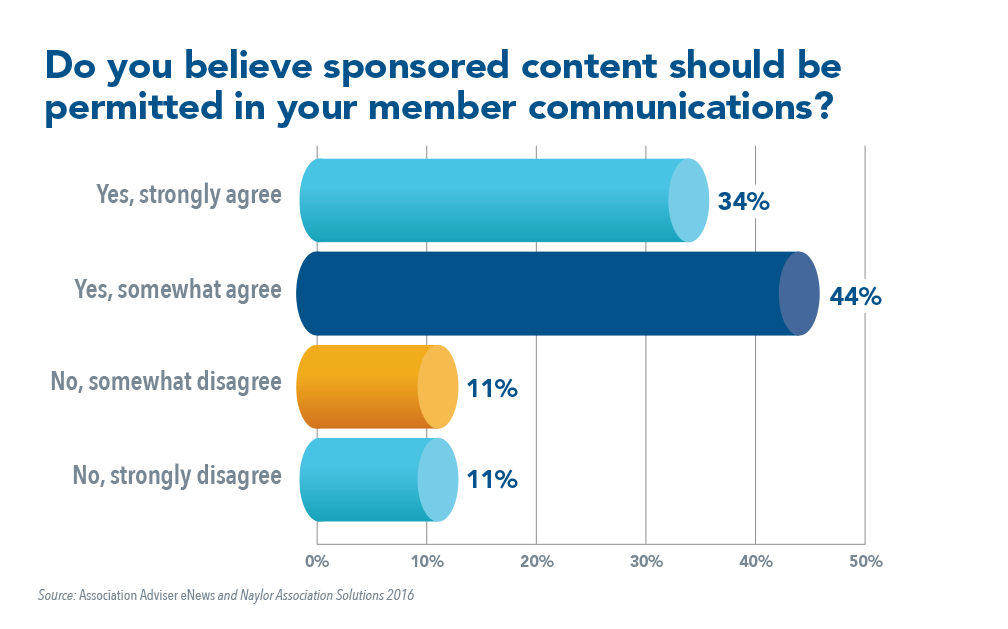Majority of Associations OK with Sponsored Content
If you think you’ve been seeing more advertiser-supplied “thought leadership” content in association media channels, you’re not alone. Preliminary results of our unscientific reader poll show that the majority of association leaders (78 percent) agree that sponsored content should be permitted in their member communications. Just over one in five respondents (22 percent) disagreed, with half of that number only “somewhat” opposed.
Advertisers and sponsors keep seeking new ways to connect with members. Associations keep seeking new ways to generate non-dues revenue and keep members informed about the best products and solutions on the marketplace. But, before you rush out to cash in on the “pay to play” bonanza, see Hank Berkowitz’s column for some ground rules and best practices surrounding the use of sponsored content. If nothing else, make sure advertiser-supplied content is informational first and foremost, and not product literature.

“Advertisers and sponsors are pretty savvy now. They know that being salesy is a turn-off to readers,” explained Carla Kalogeridis, editorial director and publisher for Association Media & Publishing. “At this point, they’ve had a lot of practice with social media, which has taught all of us that when we engage, we had better be all about the customer and not trying to push our own message or product.”
Tom Greve, business development director at EMS World, said sponsored content is acceptable in his organization’s publications as long as it is vetted to ensure product endorsements are kept to a minimum. “We have no objection to a product mention in a case study or example of use,” Greve, former director of sales and business development for the American Institute of CPAs and the March of Dimes, added.
Guidelines that provide clear direction on the types of acceptable content are key, noted Brittany Shoul, vice president of sales for Network Media Partners. “Using language such as ‘Advertiser agrees that content should focus on information, findings, or case study in an objective way that both benefits and informs the audience and does not solely focus on the direct promotion of a company or product’ provides clear guidelines,” she said.
Also, before the sale is completed, Shoul recommended sharing examples of acceptable content with advertisers. She said this could include mailing a recent copy of a magazine with sponsored content flagged to a new prospect to help them understand what is acceptable.

